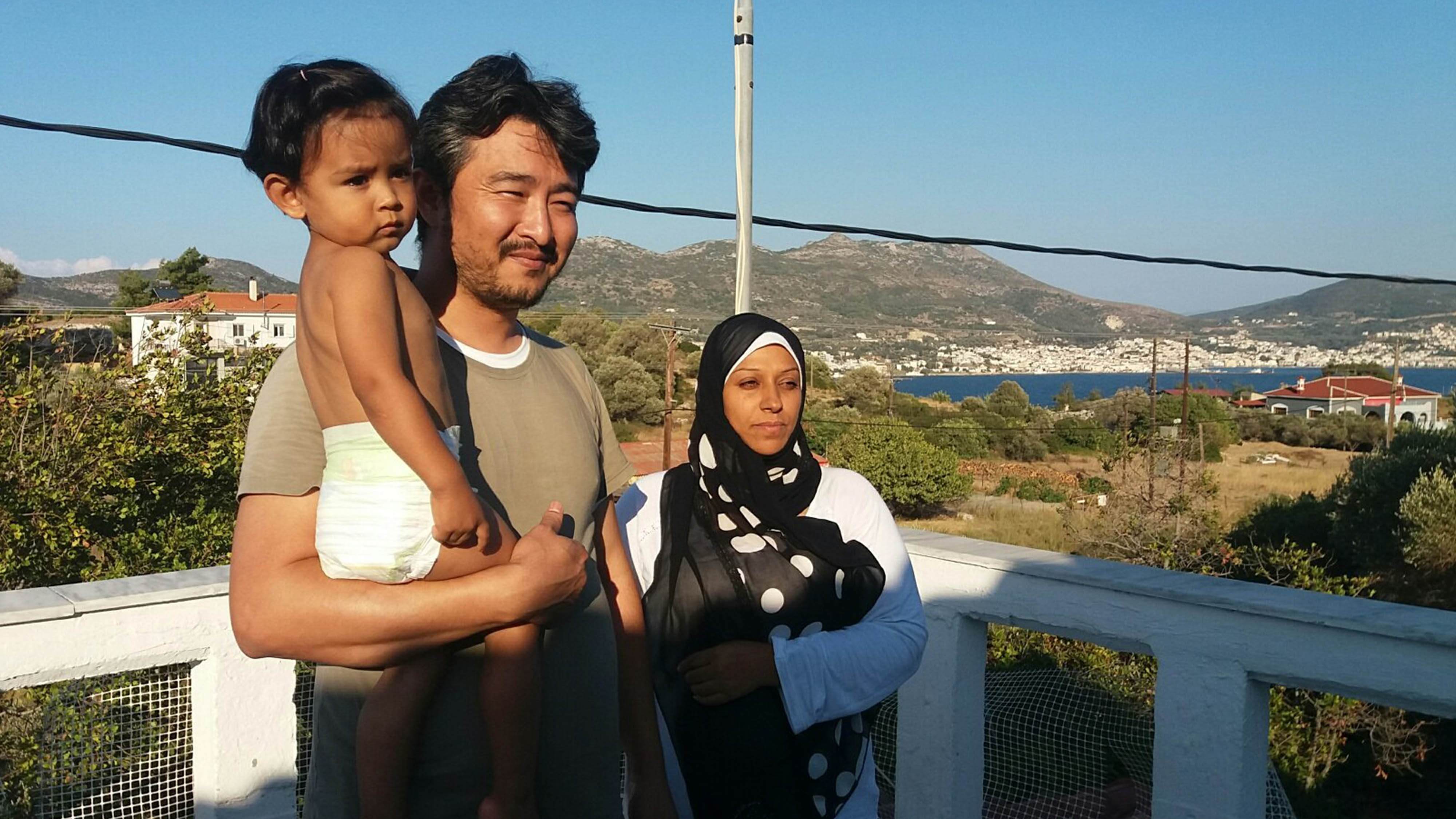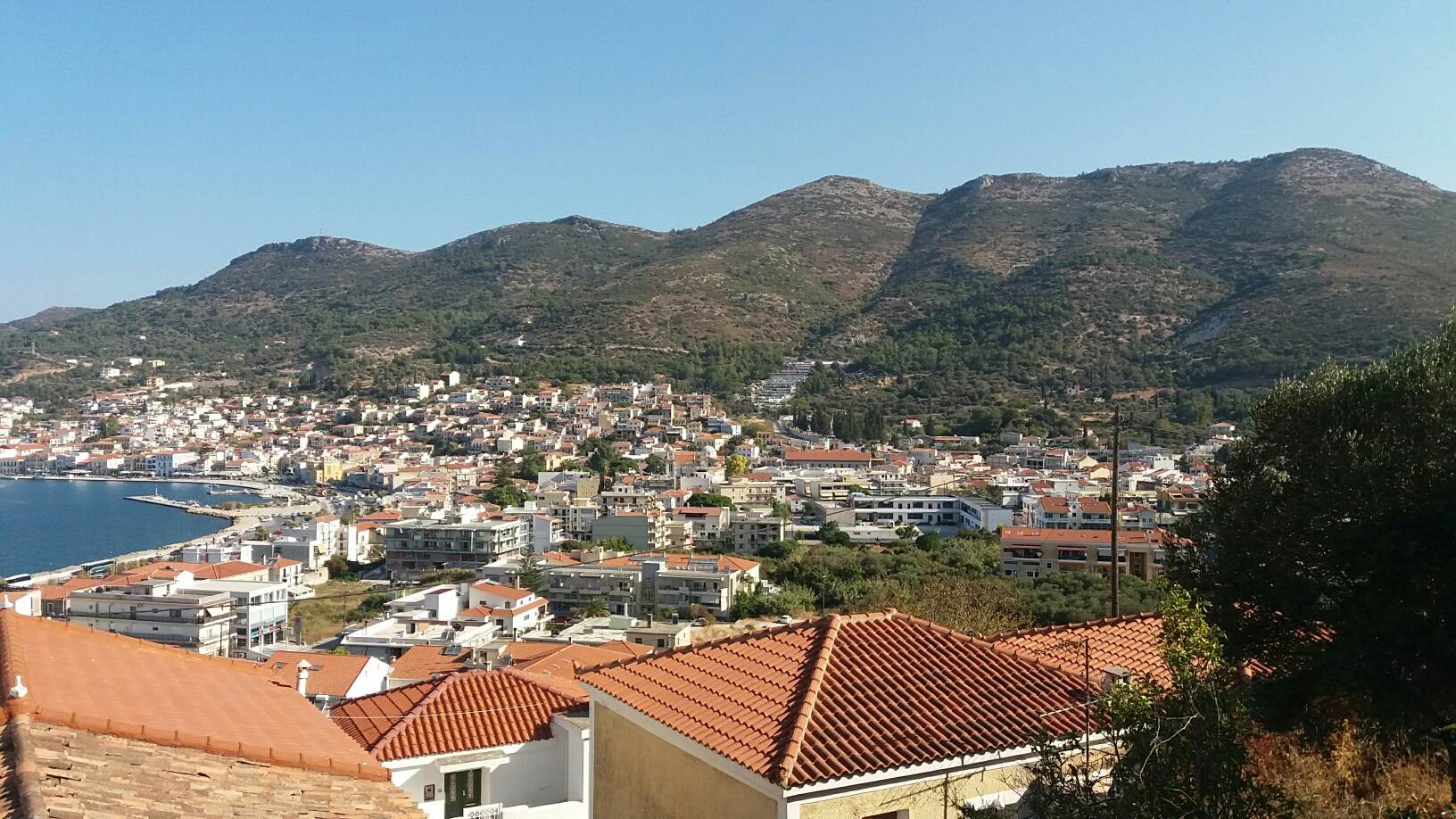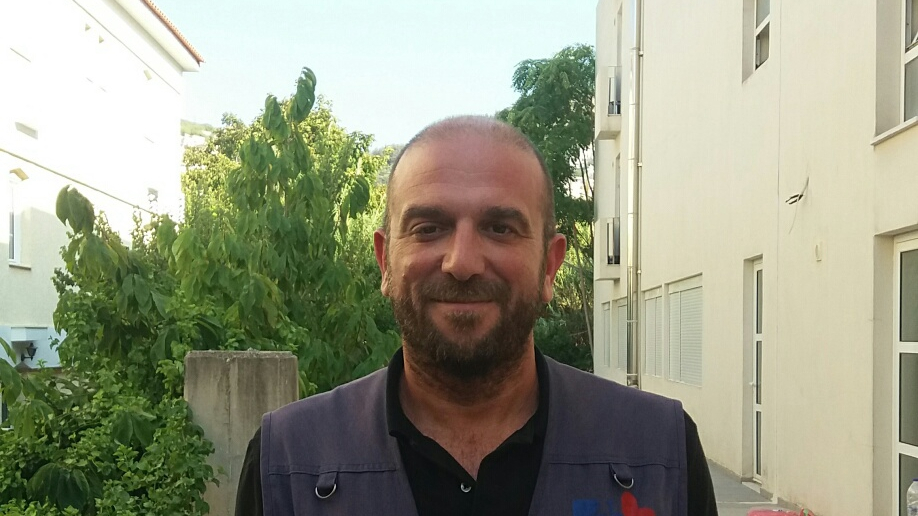
World
20:37, 19-Sep-2018
Samos refugee camp in Greece: Rodents, snakes and rotting food
Updated
18:01, 27-Sep-2018
CGTN's Filio Kontrafouri
04:12

It stands under the bright, Aegean sun. And yet, it is a dark place overflowing with people, dirt, illness and, above all, desperation.
The refugee camp on the small island of Samos, built with a maximum capacity of 700, currently hosts close to 4,000 asylum seekers. A former military installation on a hill overlooking Vathy, the capital of Samos (population 6,000), the camp has reached a breaking point with tents and makeshift shelters spilling out deep in the forest.
Women, children and men live in squalid conditions, with no running water, amid rotting food, stacks of empty plastic bottles, rodents and even snakes. They spend their days drifting into nothingness, on their mobile phones, in line for hours to get the daily meals provided by the Greek Army inside the camp. Fights there break out almost daily. Each new arrival gets a bundle with a foam mat and a sleeping bag. If there is space, they will be escorted to a tent. If not, they will have to find a spot to settle.

The refugee camp on Samos is situated on the edge of Vathy, the island's capital, on the hill above the cemetery. /CGTN Photo
The refugee camp on Samos is situated on the edge of Vathy, the island's capital, on the hill above the cemetery. /CGTN Photo
"We are suffering here, we are suffering!" says a man from Guinea in French. A woman from Iraq comes with tears streaming down her cheeks, her hands a tight grip on a small pile of medical records written in Greek. Her older son was shot in Iraq while sleeping at night and shows symptoms of severe trauma. He needs to see a child psychiatrist but in Samos there isn't one.
Another man from Congo is angry because his pregnant sister was discharged from the local hospital and now lies curled on a dirty mattress, with blankets tied above her, tied to wooden posts to protect her from the sun. Another one asks why other European countries cannot take them.
Almost everyone here has applied for asylum, which is their only shot to stay in Greece. After the European Union and Turkey signed an agreement in March of 2016 to limit the flow of asylum seekers pouring into European countries, those who arrive to the Greek islands from Turkey must remain there and wait for their claims to proceed before they are allowed to move to the mainland. If they don't apply for asylum or their claims are rejected, under the EU-Turkey deal, they must be returned to Turkey. The process is long and tormenting.

File photo: The refugee camp near the overcrowded hotspot on the Greek eastern Aegean islands of Samos on Oct. 13, 2017. /VCG Photo
File photo: The refugee camp near the overcrowded hotspot on the Greek eastern Aegean islands of Samos on Oct. 13, 2017. /VCG Photo
The UN Refugee Agency (UNHCR) in Samos has no operational role in the site since last year, when the government took full control of the camp. It monitors the asylum process, assists with mainland transfers, the accommodation of vulnerable asylum seekers and provides some cash assistance.
Pipina Katsari, a UNHCR protection officer says the current situation is dire. "The fact that many of these people have resided in this site for over six months has also aggravated the situation, even for those who didn't have a condition, medical or psychological, eventually the deteriorating living conditions have aggravated their mental health and their physical health."
Unlike the infamous Moria camp on Lesvos, which has been constantly on the spotlight, the tragedy of Samos is that there are no journalists or aid organizations roaming the island. Only a couple of NGOs operate here with a small, overworked staff. They provide services like legal assistance and help with the care of unaccompanied children. But organizations providing medical and psychological support to camp residents have left.
Manos Logothetis, a medical coordinator of the Hellenic Center for Disease Control and Prevention (KEELPNO) is the only doctor at the camp. He is supported by nine nurses, one midwife, three social workers, one health visitor and two psychologists, a team that must care for a large population plagued with medical and psychological problems. He says the situation is intolerable for everyone, for those who live at the camp, for those who work there and also for the locals.

File Photo: Children brush their teeth at a makeshift tent camp near the overcrowded hotspot on the Greek eastern Aegean islands of Samos on Oct. 13, 2017. /VCG Photo
File Photo: Children brush their teeth at a makeshift tent camp near the overcrowded hotspot on the Greek eastern Aegean islands of Samos on Oct. 13, 2017. /VCG Photo
"What scares me the most is that winter is coming," says Dr. Logothetis, adding that there are 300 pregnant women at the camp. "What concerns me is that a newborn will be exposed in a tent, at 10 degrees. There are too many problems we are trying to solve. Someone with a heart condition must walk up the mountain to eat. For those [living in the camp] with a heart condition it's like going through an 'exercise stress test' every day in order to eat. If the 'exercise stress test' doesn't go well and he has a heart attack, I will lose him."
The local hospital has also become overburdened by the massive presence of asylum seekers. It lacks specialist care, which is needed by many asylum seekers arriving on Samos and it's only available in Athens, Greece's capital. The EU-Turkey deal has a provision for them. They are one of the so-called "vulnerable groups" entitled to a faster transfer. After being screened and diagnosed with a condition that needs treatment not available on the island, these asylum seekers can be transferred to the mainland. But there is no accommodation there either. Camps on the mainland are also suffocating. So even they, remain stuck on the island.

Manos Logothetis is also known as "the migrant doctor." He assists asylum seekers on the island since the refugee crisis began in 2015. /CGTN Photo
Manos Logothetis is also known as "the migrant doctor." He assists asylum seekers on the island since the refugee crisis began in 2015. /CGTN Photo
At the same time, both the Greek and the European asylum officers working at the camp are not enough to keep up with the application overload. Then very few people are returned to Turkey. And such returns had been deemed essential for the EU-Turkey deal to work. Arrivals have been outpacing transfers to the mainland. And so the situation in frontline islands like Samos has become unsustainable. Since the EU-Turkey deal came into effect, the number of asylum seekers in Greece has almost doubled. They have surpassed 63,000.
Less than a year after the 2015 refugee crisis that shook Europe began, European countries shut their borders saying they couldn't handle such massive influx any longer. But in Greece, it's all about geography. The narrowest point separating Samos from Turkey is only 1.6 kilometers wide. Arrivals have gone down dramatically compared to 2015. Yet, for those seeking safety and a better life in Europe, Greece is and will always be a natural entry point to the continent. Only that now, for most of them this journey ends in small, Aegean islands like Samos. "Where Europe failed, we're now calling on 4-5 Greek islands that had no infrastructure to deal with such a situation, to hold on," says Dr. Logothetis, "They cannot hold on. Europe became worn down. How can Samos hold on?"
(Cover photo: Ghada Abdullah with her husband and their children are among the couple hundred asylum seekers hosted in UN-rented apartments on Samos. /CGTN Photo )
7402km

SITEMAP
Copyright © 2018 CGTN. Beijing ICP prepared NO.16065310-3
Copyright © 2018 CGTN. Beijing ICP prepared NO.16065310-3